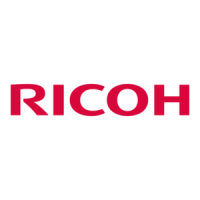Coordinate System
Xm, Ym Coordinate System (Medium Presentation Space)
The Xm, Ym coordinate system is the medium presentation space coordinate system. The origin of this
system (Xm=0, Ym=0) can be set by the IPDS XOH Set Media Origin command to any of the four
corners of the media. If this command is not sent to the printer the origin is the top-left corner (viewed
from the center). In this case, positive Xm values begin at the origin and increase along the top edge
from left to right. Positive Ym values begin at the origin and increase along the left side from top to
bottom. Top is defined as the short edge which leads into the printer. See Intelligent Printer Data Stream
Reference for a description of the Xm, Ym Coordinate System and default media origin for envelopes.
Xp, Yp Coordinate System (Logical Page Presentation Space)
Identifying the Size of the Logical Page or Overlay
The size of the logical page or overlay presentation space is set during a printer initialization using the
"IPDS Initialization Defaults" or by the host program when it sends a Logical Page Descriptor command.
Overlays are logical pages and are handled as such by the printer with the following special
considerations:
1.
Overlays are positioned in relationship to the logical page presentation space origin (Xp=0, Yp=0)
when they are merged with the Include Overlay command.
2. Overlays are positioned in relationship to the origin of the medium presentation space (Xm=0,
Ym=0) when they are merged with the Merge Overlay keyword in a copy control record.
• For details about the "IPDS Initialization Defaults", see page 39 "IPDS Initialization Defaults".
I, B Coordinates System (Text)
The +I and +B directions for the logical page or overlay are specified in degrees of rotation in
relationship to the +Xp direction on the logical page.
The printer sets the +I and +B directions during the initialization through the "IPDS Initialization Defaults".
The host program can change the +I and +B directions through the Logical Page Descriptor command
(See Intelligent Printer Data Stream Reference).
The host program can also change the +I and +B directions as it builds a page or overlay through text
controls in the print data sent by a Write Text command (See "Write Text", IPDS Technical Reference 2).
Coordinate System
27

